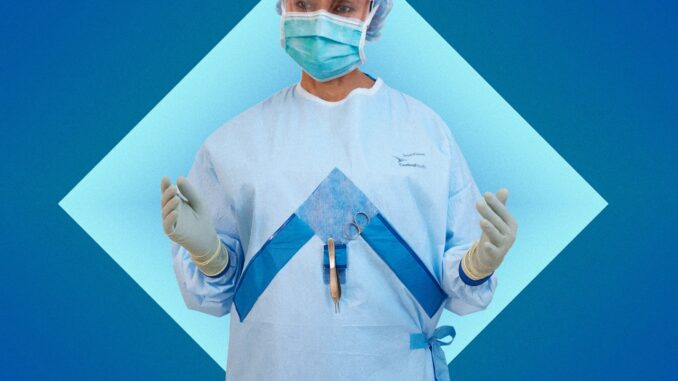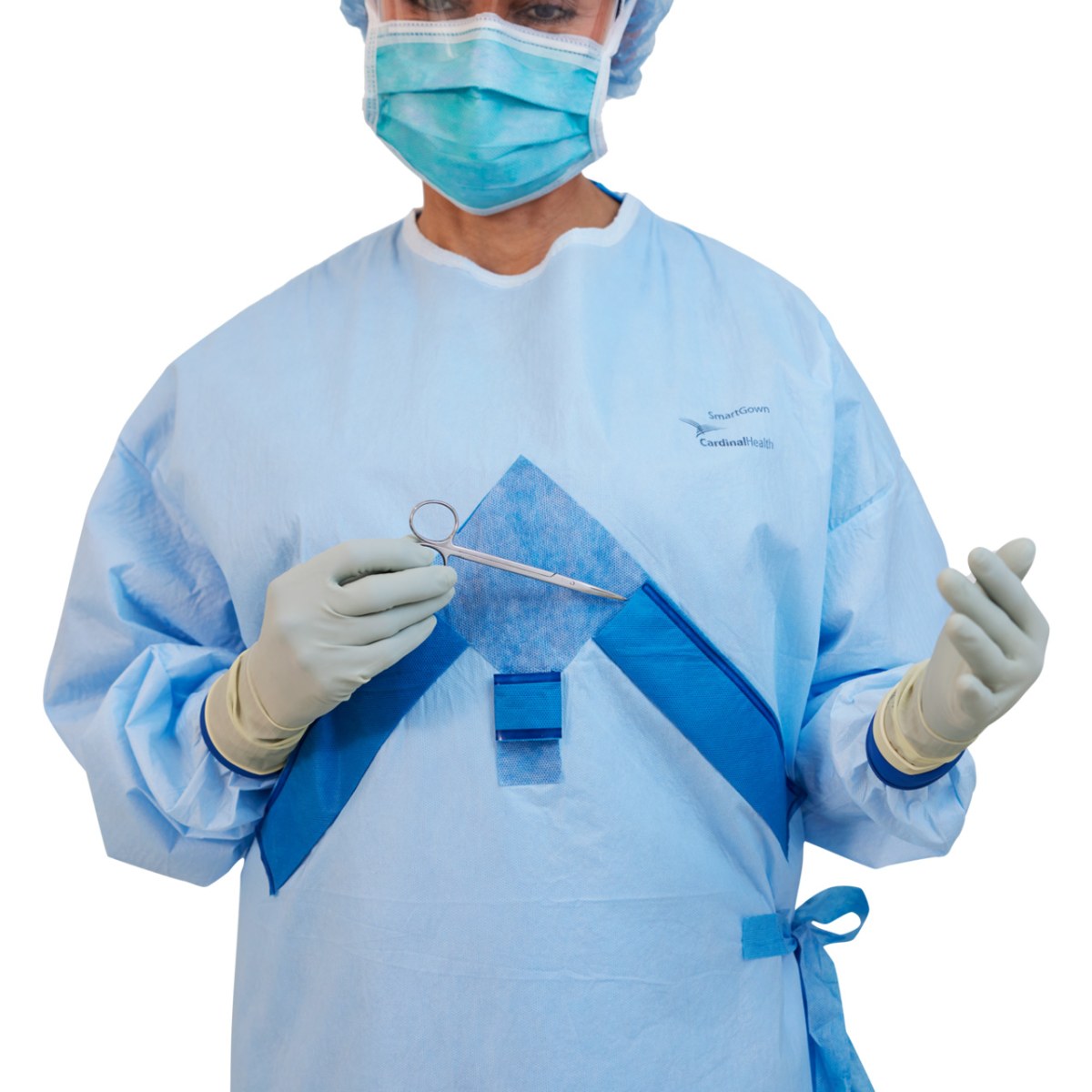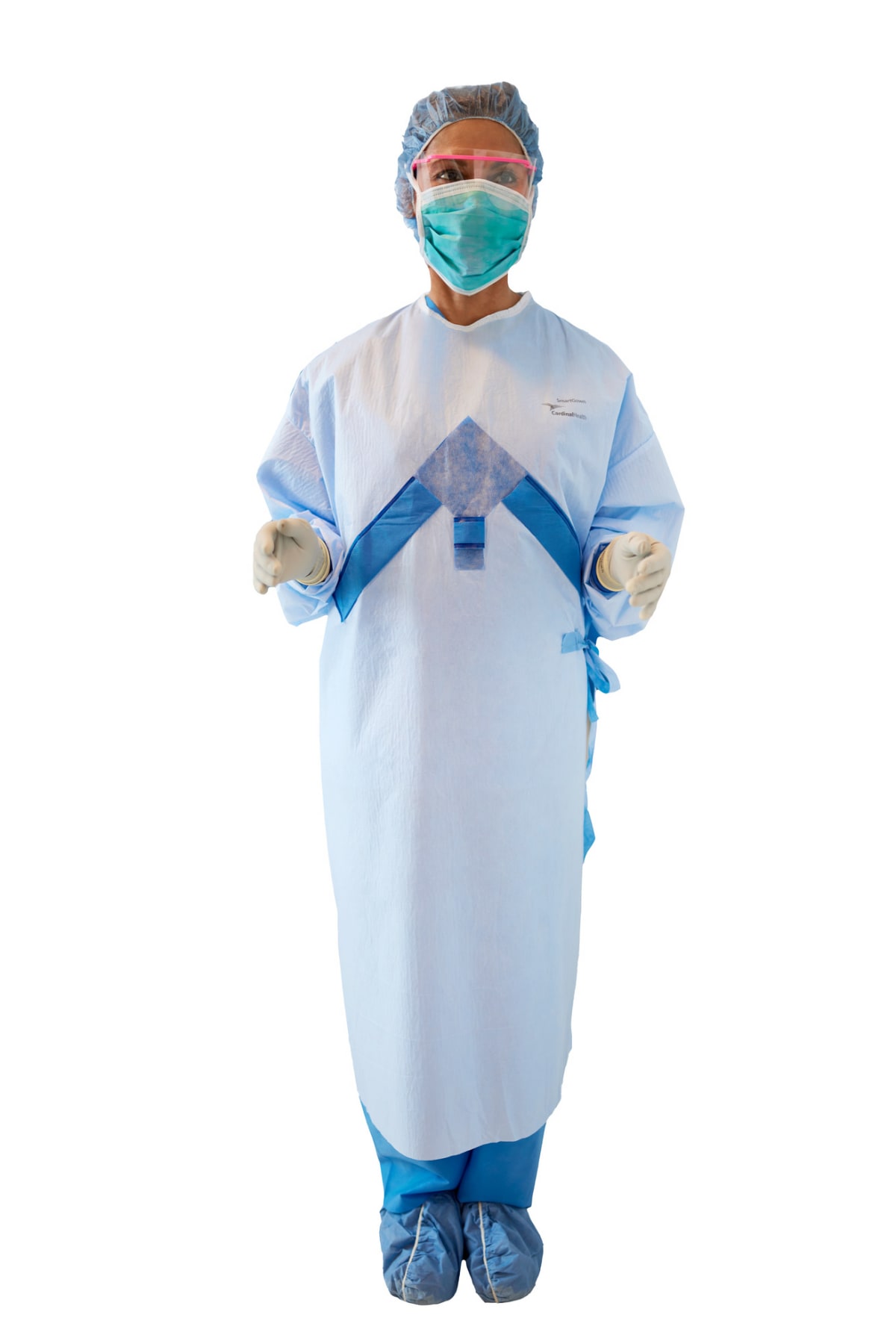
[ad_1]
If you’ve ever undergone surgery, you understand how chaotic the operating theater can be. During both of my C-sections, I remember a tiny room crammed with half a dozen nurses, lab techs, and doctors who were all passing scalpels, knives, and forceps back to each other.
Surgeons also find this environment disorderly. Just ask Dr. Joseph Dearani, director of pediatric and adult congenital heart surgery at Mayo Clinic. “Surgery involves a lot of instruments, then tubes and lines, which makes the operative field a very busy four or five square feet of geography,” he says. “It’s really common for instruments to be misplaced, mixed up in the drapes, or hidden behind something.”
Over the last two years, Dearani has been working on a surgical gown that will improve the flow and efficiency of surgery. And it comes down to a very simple design tweak: pockets.

[Photo: Cardinal Health]
He designed a disposable gown with long sleeves that goes down to the calves. Unlike traditional surgical gowns, this one contains two large pockets on the chest, along with a smaller pocket in the middle, all carefully designed to maintain sterility and hold frequently used surgical instruments. Cardinal Health, a major distributor of healthcare devices, collaborated with Dearani and Mayo Clinic, to develop the gown and take it through the FDA approval process. The new product launches today and will be sold throughout the United States.
In many ways, Dearani was uniquely suited to invent this new gown. He’s a renowned cardiovascular surgeon at the top-ranked hospital in the nation. And he’s also a medical researcher, who is particularly focused on improving the efficiency of surgery, having written many articles about it in medical journals. “I’m fixated on the performance and choreography of surgery,” he says. “The etiquette and conduct of surgery has a big impact on the efficiency of the operation, as well as the outcomes.”
But he also has experience that many other surgeons don’t have. Before he entered the field of medicine, he worked as a mechanic in a garage. He remembers how useful it was to wear overalls full of pockets for the most commonly used tools, so he didn’t have to go back to the toolbox to get what he needed. He wondered: Why didn’t surgeons have access to a gown with pockets?
“As medical science has improved, we’ve added more technology to surgery, but this means it is harder to keep track of all the tools,” he says. “Pockets were an obvious solution.” Dearani explored whether a patent had been filed for pockets on a surgical gown. The answer, he discovered, was no.
It’s unclear why. It is possible that medical product suppliers either didn’t understand how crucial pockets are to surgeons, or didn’t think investing in redesigning a gown would lead to financial gain.
He brought the idea to Mayo Clinic Ventures, the clinic’s business development arm. He worked with the team to file patents, then they brought the idea to Cardinal Health, which worked to ensure that the gown would meet all of the standards necessary to qualify as an FDA-approved medical device.
While on the surface, the concept of incorporating pockets into a medical gown seems straightforward, there are actually many complexities involve, particularly when it comes to keeping tools sterile. The FDA requires that surgeons have a sterile field from their shoulders to their knees, which means all tools in that area need to be disinfected. So, for instance, if a doctor happens to accidentally brush a pair of forceps across their cheek as they are taking it out, it is considered contaminated.
The goal of the pockets was to be able to store the most frequently used tools, which tend to be small, including things like scalpels, forceps (which look like tweezers), and scissors. None of these tools are sharp, so they wouldn’t tear through the gown, contaminating it. But the placements of the pockets had to be very strategic.

[Photo: Cardinal Health]
If the pockets were too high up on the gown, surgeons might inadvertently touch their faces when taking them out. Or if they were too low, it might be hard to access them during the surgery. Then there was the matter of the size of the pockets. If they were too big, it might be hard to easily access the tool, but if they were too small the tool might not fit. If the pockets were too deep, surgeons would have to dig around to find it, but if they were too shallow, tools might just fall out.
Through a lot of testing and prototyping, the team landed on a design with two pockets on either side of the chest. They are slanted at an angle, so when the surgeon removes a tool, they are unlikely to touch their face. There is also a third, thinner and deeper pocket that is right in the middle, which is perfectly suited for commonly used tools like scissors or forceps. “The gown is meant for every surgical specialty,” says Dearani. “We all face similar challenges, although sometimes we might rely more on different instruments.”
Kelley Moffett, SVP of global products at Cardinal Health, says part of her job involves speaking with doctors and clinicians, who are often eager to pitch her ideas. In many cases, the devices they’re trying to develop are highly specific to their own particular specialty or everyday experience. But it can be very hard to scale these products up, because there isn’t a large enough market for them. Cardinal was intrigued by Dearani’s idea, however. “This gown has widespread adoptability,” she says.
And, perhaps, more important, it’s a simple solution that could potentially improve efficiency and patient outcomes. “These are things we’re always thinking about, but particularly now, when surgical staff and labor is so thin, facilities are strained,” Moffett says. “When you think about the potential for dropping instruments and cross contamination, this was a great solution that would maintain sterility, and protect both patients and clinicians in a meaningful way.”
The development of this gown reveals how simple, inexpensive solutions can sometimes have enormous impact. And yet, these easy design tweaks often get overlooked. Moffett says innovation labs and other R&D facilities don’t invest in these simple solutions because they don’t appear, on the surface, to be profitable. “The thing about new product development is that it doesn’t always need to focus on a big sexy medical device,” says Moffett. “Some of the most simple products are critical to care. We don’t need to settle with products that are out there; everything has the opportunity to be improved.”
[ad_2]
Source link
Leave a Reply